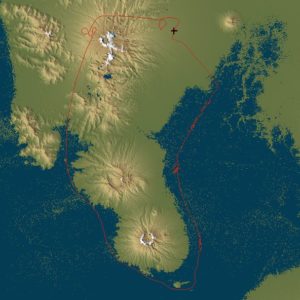 Since starting my flight training I have made it a point to try and fly in as many different countries as possible. So far, I’ve flown in my home town in Ireland three times, in Australia last February and I just got to fly in the Philippines in January this year.
Since starting my flight training I have made it a point to try and fly in as many different countries as possible. So far, I’ve flown in my home town in Ireland three times, in Australia last February and I just got to fly in the Philippines in January this year.
I make trips every six months to my company’s manufacturing plant which is south of Manila. This time I spent some time online and found an FBO called Omni Aviation located in the former Clark Air Force Base. I contacted them in early December by email and got a pretty fast response from a guy called “Capt. Lasmarias”. Yes, they had planes to rent, a 172F (1968) and a 172XP for $120 & $126 per hour wet. After I got back to the USA after my Christmas holiday in Ireland I confirmed the dates and made a hard booking for the 172F (the 172XP was grounded for some reason). Capt. Lasmarias emailed me pretty good driving directions and contact numbers so it really was a no hassle process.
I was staying in a pretty nice hotel in Makati City – this is the fancy high-rise part of Manila where they have us rich westerners stay (a five star hotel for $60 per night). It is generally a pain to stay there for anything but the shortest trips as it is a two hour drive to work through traffic that makes the San Francisco Bay Area look like a cake walk, but the company provides a car and a driver because they know I’d kill myself trying to drive on my own in Manila. I organized for my driver to take me up to Clark AFB on Saturday morning, he decided that we needed to start out at 5:30am to make it there for 9am. In the event we arrived outside the base at 7:30am and spent half and hour drinking coffee at a filling station since Omni doesn‘t open until 8am.
Finding Omni on the base was no problem and I was just taking a walk around the flight line when Capt. Lasmarias turned up and introduced himself, his first name is Aljess. He turned out to be a 27 y.o. CFI who is also the general manager of the FBO. His dad is a pilot with Philippines Airlines and he mentioned that there are 15 pilots in his family. He has about 500 hrs and is working his way towards an airline job as well. He flew as co-pilot with me, took care of the radio work, took the controls so I could take pictures and generally kept up a constant commentary on what we were flying over, its history and flying in general. In short he was a nice guy to fly with and he really added to the enjoyment of the flight.
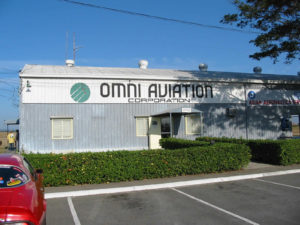
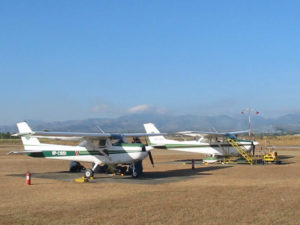
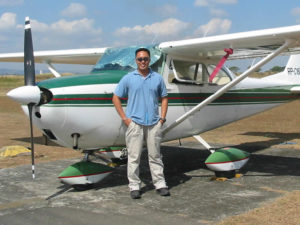
We did a quick briefing in the FBO. The rules, regulations and airspace in the Philippines seem to be basically the same as the USA. We discussed our route and made plans to land at Corregidor the largest island in Manila Bay, we reviewed the equivalent of the AF/D (hand written notes in a well worn notebook belonging to Aljess). Corregidor had a gravel strip with an asphalt touch down zone, is about 2000’ long and sits on top of a narrow ridge at one end of the island. There is no weather reporting, instead you check the ATIS for Manila International which sits at the far side of the bay. The rule is you don’t land at Corregidor if the ATIS is reporting over 10 knots of wind. Aljess filed a flight plan by fax (required for every flight in the Philippines) and then told me that the plane had a problem with its starter motor so we would have to take a mechanic and a spare battery along in case we couldn’t get the plane started again after landing in Corregidor, I agreed as long as the mechanic was a small guy, as Aljess and myself are each about 200 lbs and this is only a 172 that is also carrying full fuel!. The mechanic turned out to be about 110 lbs, even so I think we were pretty close to max gross weight at takeoff.
The plane RP-C1680, turned out to be a spotless 172 with almost new paint and interior. There was not a speck of dirt inside or out. This should not be surprising, when I walked around the flight line earlier there were 4 ground staff on their hands and knees cleaning and fueling her (I guess ground staff are not that expensive here). I did my usual pre-flight and everything looked good on the outside. The instrument panel looked a little tired and there was only one radio. Aljess took care of actually starting her, as promised the starter motor was on its last legs, it barely turned the engine over (Aljess assured me that they were only waiting for the replacement part to fix it). After two or three attempts the engine finally started and sounded just fine (and I decided quietly to myself that we wouldn’t be landing on Corregidor even with a mechanic and a spare battery onboard).
Aljess took care of getting a taxi clearance and I got to practice my soft field taxi technique. There are no taxi ways as such, just flattened bits of grass. While Clark has two huge runways (it was an Air Force Base after all), Omni actually has their own runway that is separate from the main runway complex. Its about 2800’ of asphalt but the takeoff point is actually on the grass about 500’ short of the numbers. This makes for an interesting transition, full soft field technique until you hit the asphalt going around 40 KIAS then transition to a normal takeoff to lift off about halfway down the runway. With all the weight onboard our climb rate was pretty anemic (or maybe I’m just spoiled after so long flying the Skylane, I’ve forgotten the good old days flying Skyhawks!). Clark AFB is in class C airspace, but there is hardly any traffic. Aljess tells me it gets busy at night with FedEx jets. The radio work seemed pretty simple, basically stay on the tower frequency for traffic advisories (there wasn’t any).
We made a left crosswind departure which took us across the main runways and then flew a racetrack circuit on the Northwest side of the field to climb up to 5,500’ before turning West to head across the mountains. The weather was pretty clear with just some small cumulous over the mountains with tops at about 5,000’. We passed Mt. Pinatubo on our left then turned southwards to fly along its northwestern flanks. The devastation from the 1991 eruption is incredible. The whole area on this side of the mountain is covered in thick ask deposits. The surface has grown a thin layer of vegetation, but you can see many deep gorges cut into the ash by rivers flowing down from the mountain. There is nothing left down there except ash – it was once full of farms and villages. We made a couple of circuits and climbed to 6,500’ to get a better look inside the crater which is now home to a lake. Then headed southwest towards the coast and Subic Bay, descending to 3,500’ along the way. I had expected the air to be fairly bumpy over the mountains, but we were above the puffy clouds and it was really quite smooth (Aljess said it usually got bumpy after midday).
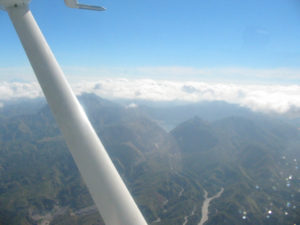
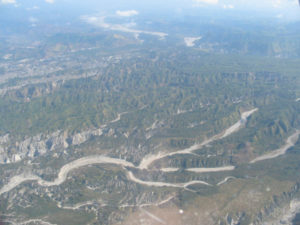
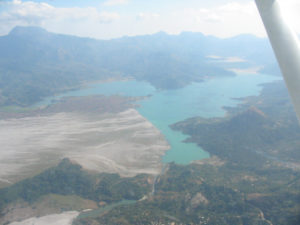
We flew across the mouth of Subic Bay and got a great view of the old naval base and airport. Then down the coast to Manila Bay – you could see the coral reefs lining the coast, it was really very beautiful. Corregidor Island was home to a bunch of WW2 buildings and installations. We dropped down to 1000’ to see the buildings and checkout the runway (Manila ATIS was reporting calm winds). Taking one look at the runway convinced me that my no-go decision was a good one. So I told the guys that I was secure enough in my manhood not to feel the need to test it by making a landing here. Busy airspace with lots of ATC I can do, but not landing on a short gravel strip along a knife edge ridge on an island with no guarantee that the engine will restart if I turn it off!
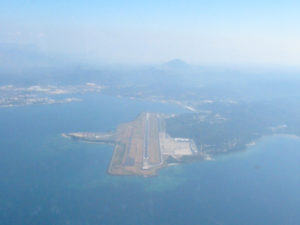
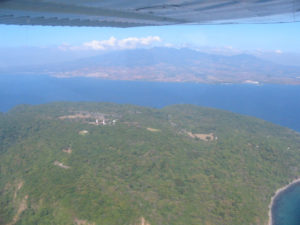
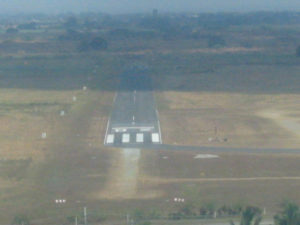
After Corregidor we flew along the northwestern side of Manila Bay. Not much to see except an oil refinery and fish farms. Once you hit the north coast you just fly heading 030 until you hit the highway, turn left, call Clark Tower and then follow the highway until you see the church in the town of Angeles. That is starts you on a right base entry to runway 20. I made a pretty reasonable landing and got off at the usual taxi way (flattened bit of grass along side the runway).
Total time was 1.9hrs and cost US$259 (including various landing fees and other bits and pieces). The flight was excellent. I would happily recommend Omni Aviation and Aljess Lasmarias to any pilot wanting to get a taste of Philippines flying. The country is beautiful and there is hardly a better way to see it than from the left seat of a small plane. I’ll be back in July and I’m already making plans to fly again, maybe up to Baguio or down to Boracay this time…
